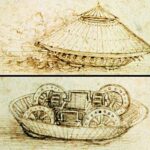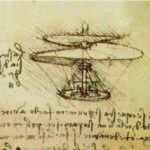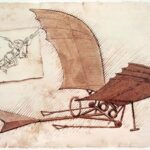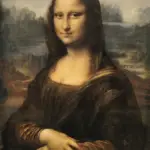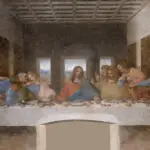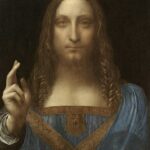Fra Angelico (c. 1395-1455) was an Italian Renaissance painter, also known as Guido di Pietro or Beato Angelico. He was a friar of the Dominican Order and is considered one of the greatest painters of the Early Renaissance period.
Fra Angelico was born in the small town of Vicchio, Italy, around 1395. Little is known about his early life, but it is believed that he became a friar in the Dominican Order in his late teens or early twenties. He took the name Fra Angelico which means Angelic Brother.
Fra Angelico Artworks
Fra Angelico began his artistic career as an illuminator, creating and decorating manuscripts in the early 1420s. He eventually began to paint frescoes and altarpieces for churches and convents, and his work quickly gained recognition for its beauty and spiritual intensity.
In 1436, Fra Angelico was appointed the Prior of the San Domenico di Fiesole, a Dominican convent near Florence, and he spent much of the rest of his career there. He painted many frescoes and altarpieces for the convent, and also worked on commissions for other churches and convents in the area.
In 1447, Fra Angelico was summoned to Rome by Pope Eugene IV to paint frescoes in the Cappella Niccolina, a private chapel in the Vatican Palace. He completed the frescoes in 1451, and they are considered some of his greatest works.
Fra Angelico Art Style
Fra Angelico’s art style is characterized by its simplicity, elegance, and spiritual intensity. He used bright colors and a delicate touch to create a sense of serenity and harmony in his paintings. His work is also known for its attention to detail and its ability to convey a sense of spiritual devotion.
One of his most notable characteristics is his use of a limited color palette, which is composed mainly of blues, greens, and yellows. He also used a technique called sfumato, which involves blending colors to create a hazy, atmospheric effect. This technique adds depth and emotion to his paintings and helps to convey a sense of spiritual transcendence.
Another characteristic of his art is the use of symbolism. He incorporated many religious symbols and motifs in his work, such as halos, wings, and angels, which help to convey the spiritual themes of his paintings. He also depicted religious figures in a naturalistic and lifelike manner, which adds to the realism and emotional impact of his work.
Fra Angelico Paintings
Fra Angelico is best known for his frescoes, altarpieces, and panel paintings. Some of his most famous works include the frescoes in the Cappella Niccolina in the Vatican Palace, the San Marco Altarpiece, the Annunciation, and the Last Judgement. These works demonstrate his ability to convey spiritual themes through his art and his mastery of technique.
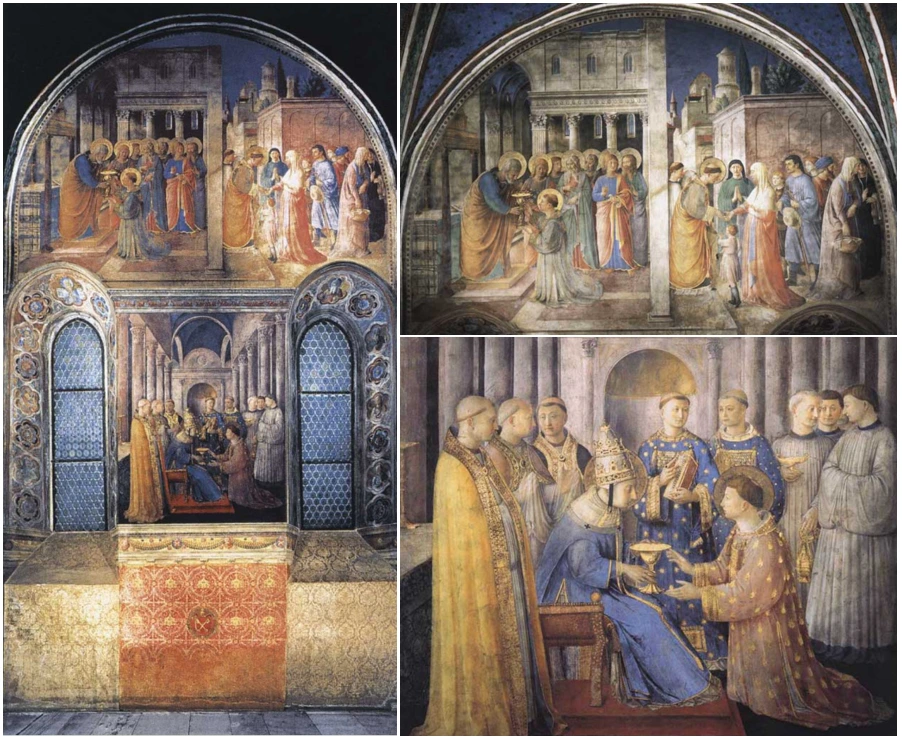
Frescoes on the West wall of the Cappella Niccolina (1447-1451, left), The Sermon of St Stephen and Dispute before the Sanhedrin (upper parts of the West wall frescoes, right up), and St. Peter Consacrates St. Lawrence as Deacon (lower parts of the West wall frescoes, right down)
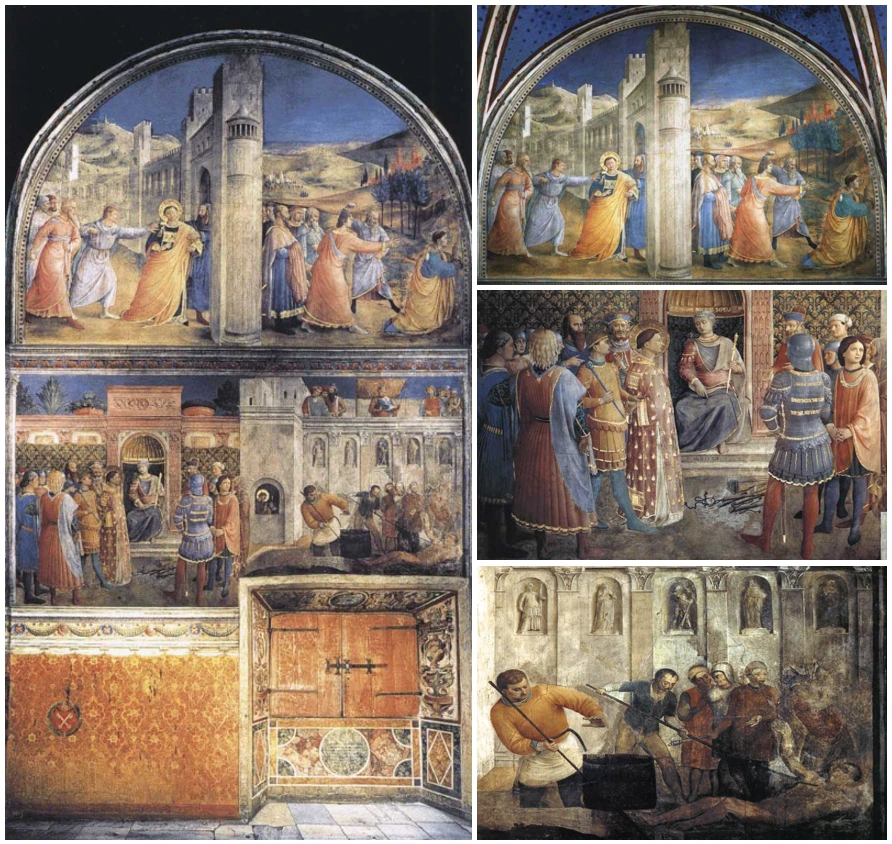
Frescoes on the East wall of the Cappella Niccolina (1447-1451, left), St Stephen being led to His Martyrdom and the Stoning of St Stephen (upper parts of the Eest wall frescoes, right top), The Condemnation of St Lawrence by the Emperor Valerian (middle left parts of the Eest wall frescoes, right middle), and Martyrdom of St Lawrence (middle right part of the East wall frescos, right down)
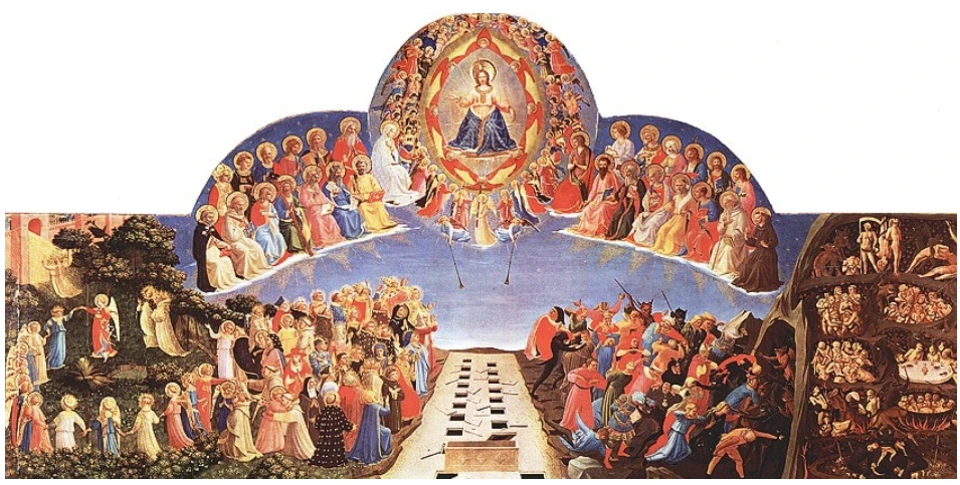
The Last Judgement (1431)
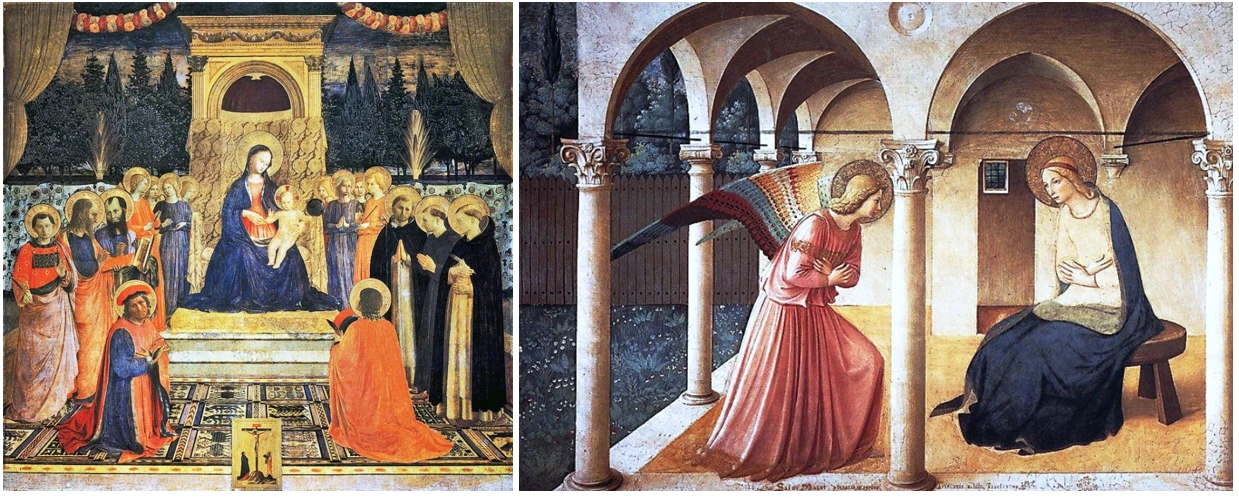
San Marco Altarpiece (1438-1443, left) and he Annunciation (c. 1434, right)
Fra Angelico died in 1455 in the San Domenico di Fiesole. He was highly regarded in his lifetime and his work was widely admired. Today, he is considered one of the greatest painters of the Early Renaissance period and his work continues to be widely admired and studied.
